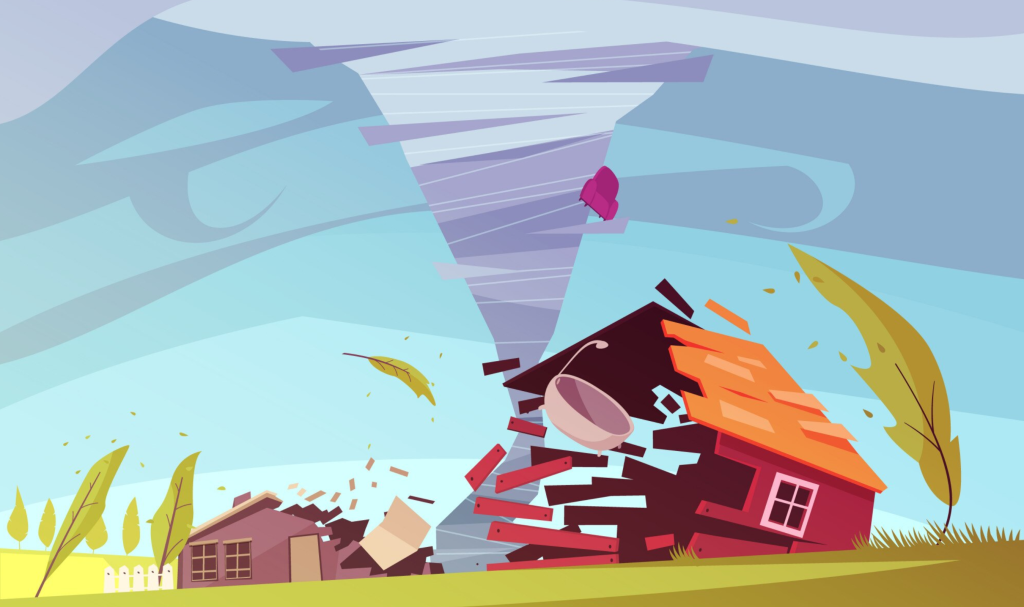From hurricanes and wildfires to earthquakes and floods, natural disasters can strike without warning. While we can’t prevent them, we can take powerful steps to reduce the risks and protect ourselves. In fact, home preparedness can mean the difference between chaos and control during an emergency.
This guide breaks down everything you need to know about preparing your home and family—before, during, and after a natural disaster.

🌪 Why Disaster Preparedness at Home Matters
Natural disasters are becoming more frequent and intense due to climate change and environmental shifts. According to FEMA, over 60% of Americans don’t have a disaster plan, which puts millions at greater risk every year.
Being prepared doesn’t just protect your property—it protects your peace of mind and possibly your life.
🏡 Step-by-Step Guide: How to Prepare for Natural Disasters at Home
1. Know Your Local Risks
Not all disasters are the same—and neither are the risks where you live. Start by:
- Researching your area’s natural hazards (earthquakes, tornadoes, floods, etc.).
- Using tools like Ready.gov’s hazard maps to assess threats.
- Signing up for local emergency alerts and weather apps for real-time updates.
2. Create a Family Emergency Plan
A plan helps everyone stay calm and coordinated during a crisis. Your plan should include:
- Meeting spots (one nearby and one outside your neighborhood).
- A communication strategy if cell service is down.
- Emergency contacts list (including out-of-town relatives).
- Roles for each family member—especially kids and elderly members.
💡 Tip: Practice your plan at least twice a year—like a fire drill.
3. Build an Emergency Kit
FEMA recommends preparing for at least 72 hours of self-sufficiency. Your kit should include:
- Water (1 gallon per person per day)
- Non-perishable food
- Flashlights and extra batteries
- First-aid kit
- Medications
- Portable phone charger
- Important documents in a waterproof bag
- Pet supplies, if applicable
🌟 Bonus: Keep a mini-kit in your car and workplace too.
4. Protect Your Home
Reinforce your home for resilience depending on your local risks:
- Earthquakes: Secure bookshelves and heavy objects to walls.
- Hurricanes/Tornadoes: Install storm shutters or impact-resistant windows.
- Wildfires: Create a defensible space by clearing dry brush and debris around your property.
- Flooding: Elevate utilities, use sandbags, and ensure drainage systems are clear.
🏠 Homeowners and renters should review their insurance policies carefully to make sure disaster-specific coverage (like flood insurance) is included.
5. Stay Informed in Real Time
Knowledge is power—especially during an emergency. Use trusted apps and alerts:
- NOAA Weather Radio
- FEMA App
- Red Cross Emergency App
📱 Set notifications and keep devices charged when severe weather is predicted.
6. Prep for Evacuation (Just in Case)
Even if you plan to shelter at home, you may need to evacuate. Be ready by:
- Keeping your car’s gas tank at least half full
- Packing a “go bag” with essential supplies
- Mapping out multiple routes to safety
- Knowing where local shelters are, especially those that accommodate pets
🐾 Don’t Forget About Pets
In the rush of an emergency, pets are often overlooked. Prepare them by:
- Having ID tags and microchips
- Packing pet food, meds, and comfort items
- Finding pet-friendly evacuation shelters in advance
💡 Tip: Include a recent photo of your pet in case you get separated.
🔄 After the Disaster: What to Do Next
- Check for injuries and apply first aid if necessary.
- Avoid downed power lines and floodwaters.
- Use flashlights, not candles, to avoid fire hazards.
- Listen to local authorities before returning home if you evacuated.
- Take photos of damage for insurance claims.
- Don’t turn on utilities until it’s safe.
🧠 Mental Health and Disaster Recovery
Disasters take a toll emotionally too. It’s normal to feel overwhelmed. Be kind to yourself and:
- Talk with family and friends
- Take breaks from the news
- Seek help if anxiety or trauma becomes intense
(Free resources: SAMHSA Disaster Distress Helpline)
🧾 Final Thoughts
Disaster preparedness is an act of self-care, responsibility, and protection. While we can’t control nature, we can control our readiness. A few proactive steps today could save lives tomorrow.
So take the time to build a kit, write a plan, and talk to your loved ones. Because being prepared isn’t paranoid—it’s practical.
📚 References
- FEMA – Disaster Preparedness Guide
- CDC – Emergency Preparedness and Response
- Red Cross – Disaster Safety Tips





